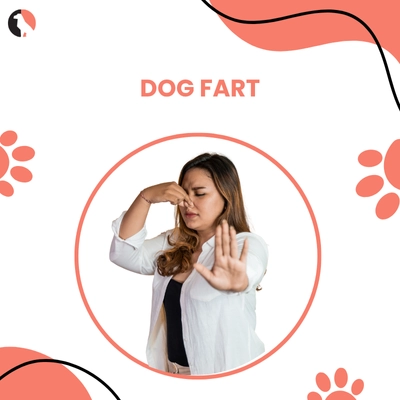Let’s be honest, no one likes to think about pee, but if you have a dog, you better start paying attention. How long can dogs hold their pee? It isn’t just a question asked by first-time dog parents; it’s something that even experienced owners need to think about. Because here’s the thing, dogs are creatures of habit, and their bathroom schedule? It matters more than you probably realize.
Ignoring your dog’s need to urinate regularly doesn’t just cause discomfort. It can actually lead to serious health problems: painful, expensive, sometimes irreversible problems. Therefore, if you’ve ever gotten yourself contemplating how long a dog can go without peeing, or you’re planning a long trip, or maybe taking a late workday, read this before you risk your dog’s bladder issues you didn’t sign up for.
So, How Long Can Dogs Hold Their Pee?
The short answer: it varies and depends. The long answer? It really varies and depends. There’s no one-size-fits-all answer because every dog is different in nature, self-control, and everything. Breed, size, age, health condition, hydration level, etc.—allof these play a role in how long can dogs hold their pee, or for your personal self, how long your dog can comfortably “hold it.” That said, healthy adult dogs can usually hold their pee for 6 to 8 hours, with some even pushing the limit to 10 hours in ideal conditions (though that’s pushing it).
But just because they can doesn’t mean they should, so you must take care of it.
Discover: Dog Vomiting Yellow Bile? Common Causes and How to Help
General Guidelines (Not Laws)
| Dog Type | How long can dogs hold their pee? |
| Puppies (2-5 months) | Every 2 hours |
| Older Puppies (5+ months) | 1 hour per month of age |
| Healthy Adults | 6–8 hours (max 10 occasionally) |
| Senior Dogs | 4–6 hours or less |
| Dogs with Health Issues | Variable, but often less than 4 hours |
Let’s highlight this: how long can puppies hold their pee is radically different from adults. If your 3-month-old pup is peeing every 3 hours, that’s not an accident; it’s biology.
The Science of It
Dogs produce about 2–4 milliliters of urine per pound of body weight per hour. That number can spike to 40 mL/hour when the dog is active according to a lead dog trainer. Bladders start stretching at almost around 160–220 mL/pound. So technically, yes, a large, lazy dog could make it through an 8-hour Netflix binge, continuously. But just because it’s possible doesn’t make it smart, and again, you must take care of it.
And what if the dog hasn’t had water recently? You might think this buys you more time. Wrong. Holding pee while dehydrated only stresses the kidneys more. So if you’re also wondering how long can a dog go without water, know this: dogs should never go more than 6 hours without access to clean water, according to the American Kennel Club.
Health Risks of Holding It Too Long
Let’s get real. Holding urine for too long isn’t just uncomfortable, it can get dangerous. Here are the issues that can occur if you make your dog wait too long to pee:
- Urinary Tract Infections (UTIs): Bacteria multiply in stagnant urine.
- Bladder Stones: Minerals crystallize and form painful stones.
- Kidney Damage: Backflow of waste due to bladder overfill can reach the kidneys.
- Incontinence: Long-term holding weakens bladder muscles.
- Bladder Rupture: Rare, but if it happens, it’s life-threatening.
A study on dogs found that dogs with infrequent urination patterns had a significantly higher incidence of lower urinary tract disease. Basically, if your dog is holding it all day, every day, you must expect trouble.
Puppies Are a Different Story
Here’s where how long can a puppy hold its pee gets tricky. Young puppies have tiny bladders and weak control. Expect to take them out:
- Every 2 hours if under 5 months old
- Every hour for every month of age, once over 5 months (e.g., 5-month-old = 5 hours)
But don’t cling to the chart too tightly. If your 6-month-old puppy still pees at the 4-hour mark, that’s your new schedule. Dogs don’t care about rules. They care about their bodies.
Explore: Explore the Bull Terrier: Genuine Tips from Trusted Owners
Nighttime vs. Daytime
Dogs are amazing sleepers. At night, when they’re calm and not drinking water, urine production slows way down. Most adult dogs can make it 8–10 hours overnight without peeing. But during the day, when they’re eating, moving, and drinking, expect to let them out every 4 to 6 hours.
Crated dogs can sometimes hold it longer due to inactivity, but don’t rely on this. It’s about comfort, not just control.
Watch for Signs They Need to Go
Your dog will tell you when they need to pee. The question is, are you paying attention?
Look out for:
- Whining or barking near the door
- Pacing or circling
- Sniffing around a spot on the floor
- Squatting without results
- Restlessness or sudden zoomies
Ignoring these signs trains your dog to stop giving them. And that’s when accidents happen.
If They Haven’t Peed in a While…
If you’re asking, how long can a dog go without peeing, and it’s already been more than 12 hours, that’s a problem. You need to call a vet. Healthy dogs should pee several times a day. If they’re not, something’s off.
Also, if your dog tries to pee but nothing comes out, or they strain, cry, or have blood in their urine, get help immediately. These are classic signs of a UTI or blockage.
Pee vs. Water: What’s the Link?
Here’s where how long can a dog go without water overlaps with how often do dogs need to pee.
More water = more pee.
Less water = more concentrated urine = more health risks.
You want your dog to drink water often and peeing regularly. That’s how their system stays flushed and clean. If your dog’s pee smells strong, looks dark, or they don’t go often, they’re not drinking enough. Fix that first.
Helping Your Dog Hold It Less Often
Letting your dog hold their pee for 8+ hours shouldn’t be the daily plan. Try these instead:
- Schedule frequent breaks: Set alarms if you work from home.
- Hire a dog walker: Especially if you’re gone more than 6 hours.
- Install a doggy door: If you have a fenced yard.
- Use pee pads or indoor turf: As a backup, not a primary option.
- Monitor water intake: Especially in hot weather or after exercise.
Dogs are creatures of routine. Set a pee schedule. Stick to it. Their bladder will thank you.
What About Senior Dogs?
Senior dogs, just like puppies, often need more potty breaks. Muscle weakening, arthritis, and medical conditions like Cushing’s disease or diabetes can increase how often they need to go.
If your old buddy is having accidents, don’t scold them. Help them. Add more breaks, keep water available, and talk to your vet.
Crate Training and Holding Pee
A crate dog might be able to hold it longer, but that’s not a license to test their limits. Puppies in crates need breaks every few hours. Adults may be able to hold it longer, but again, we’re not going for “how long can dogs hold their pee?” We’re aiming for how often should they pee.
Don’t turn your dog into a prisoner of their bladder.
Dogs Are Not Robots
There’s no button to push. No perfect number of hours. One dog might last 9 hours in an emergency. Another starts crying at 5. The key is observation.
Watch your dog. Learn their rhythm. Respect their limits. Because the question isn’t just how long can dogs hold their pee, it’s why would you make them?
Do dogs hold their pee when stressed?
Yes, and not in a “mild hesitation” way but in a full shutdown, bladder-on-lock mode. Dogs under anxiety might literally forget to pee, or worse, actively avoid it, whether it’s due to loud noises, new environments, or too many strangers around. And though how long can a dog hold its pee might seem impressive during those moments, chronic withholding under stress isn’t something you want to stretch; that’s how UTIs show up without a warning.
Learn More: How to Train a Reactive Dog: Proven Tips to Calm and Focus Your Pet
Quick Recap
Let’s keep it simple:
- Healthy adults: 6–8 hours max (10 overnight, rarely)
- Puppies: Every 1–2 hours (or 1 hour per month of age)
- Seniors: More frequent breaks
- More water = more pee (but better health)
- 12+ hours with no pee = vet time
- Crate time ≠ holding contest
Understand: Your Dog’s Bladder Isn’t a Clock
Don’t wait until they’re whining by the door or leaving “accidents” on your carpet. Be proactive. Let them out before they beg. Schedule breaks like you do meetings. Pay attention to the small stuff. And next time you wonder, how long can dogs hold their pee, ask instead, how often can I make their day easier?
Your dog can’t say “I gotta pee.” But if they could, you’d probably listen. So why not act like they already said it?























































































